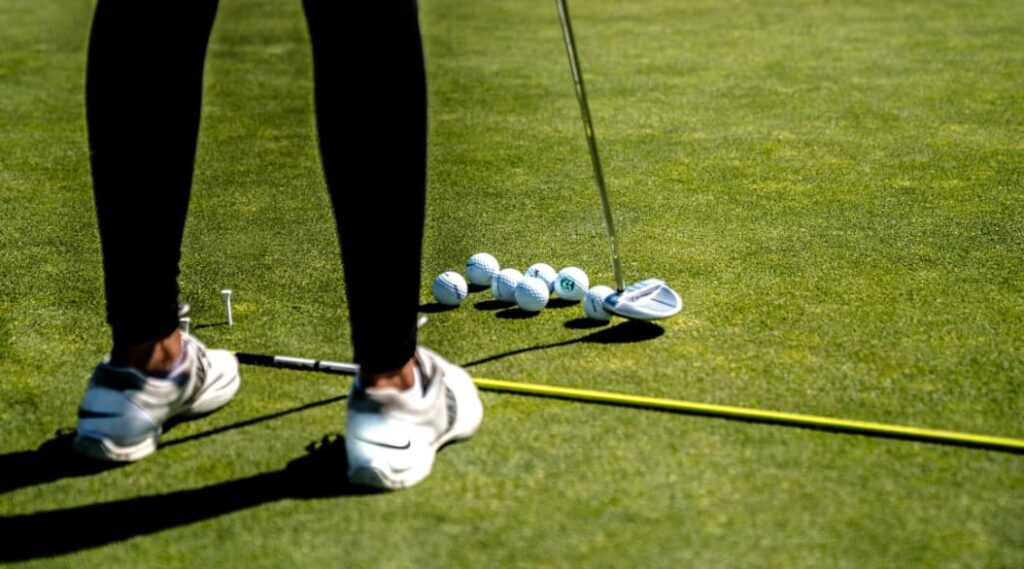Golfers face the challenging task of selecting a mere 14 clubs for their golf bags, a decision that can be daunting given the plethora of options available in the market. This selection is a gradual process, emphasizing the importance of focusing initially on the clubs that are most crucial. For those wondering about the key golf clubs to include in their arsenal, this guide offers comprehensive insights.
Key Golf Clubs for Your Bag
Essential to any golfer’s bag are the driver, 7 iron, pitching wedge, putter, and to complete the top five, the hybrid. Each of these clubs fulfills a distinct purpose, making their presence in the bag vital.
Driver
Primarily used off the tee in most par 4 and par 5 holes, the driver is pivotal for achieving long drives down the fairway, simplifying the subsequent shot to the green. Mastering the driver, despite its challenging nature, is essential for any golfer.
Hybrid
A relatively new addition to the golf world, the hybrid blends the characteristics of a fairway wood and an iron. Its unique capability lies in effortlessly executing shots from rough terrains. The hybrid’s design, with its specific weighting and club head, facilitates an easy launch, proving invaluable in long holes or critical par 3 shots.
7 Iron
The 7 iron holds a place of prominence in the golfer’s bag, especially useful for those just starting in the sport. This club, often utilized for approach shots, is remarkably versatile, making it a go-to choice for various scenarios on the course. Its real advantage lies in its ability to handle tricky situations, such as navigating through hazards or maneuvering out of less-than-ideal lies. The 7 iron offers a sweet spot in terms of loft and distance, providing a balanced combination that suits a wide range of shots.
For beginners, the 7 iron serves as an excellent introduction to the game. Its forgiving nature means that even imperfect swings can still result in reasonably good shots, reducing frustration and encouraging continued play. This forgiveness stems from the club’s design, which offers a higher degree of control and stability compared to longer irons or woods. The confidence gained from using the 7 iron can be a significant factor in a novice’s development, helping them to understand the nuances of shot-making and club selection.
Moreover, the 7 iron is not just a beginner’s club. Even seasoned golfers find it indispensable for its precision and reliability. In situations where a golfer needs to make a calculated approach to the green, or when a shot requires a specific trajectory and distance control, the 7 iron is often the preferred choice. Its utility in various course conditions and scenarios makes it a staple in the golfer’s bag, a testament to its enduring value across skill levels. Whether navigating a challenging par 3 or setting up for a birdie opportunity on a par 4, the 7 iron remains a trusted ally on the golf course.
Pitching Wedge
Useful for approach shots, chipping, and pitching around the green, pitching wedges are forgiving due to their loft and allow for precise ball placement. Proficiency with the pitching wedge often results in landing the ball near the hole.
Putter
Arguably the most crucial club, the putter is indispensable for every golfer, being the tool that ultimately sinks the ball into the hole. Often overshadowed by drivers or irons, the putter’s impact on a golfer’s performance is undeniable.
Conclusion
For beginners embarking on their golf journey, selecting the right clubs is a crucial step in laying the foundation for future success and enjoyment of the game. The clubs previously mentioned – the driver, hybrid, 7 iron, pitching wedge, and putter – represent an ideal starting point. They offer a balanced mix of distance, precision, and versatility, catering to various situations one might encounter on the course. Beginners should focus on these clubs to develop a fundamental understanding of different shot types and to build confidence in their play.
When choosing clubs, it’s not just about the type of club but also the specific characteristics of each – such as loft angle, shaft stiffness, and clubhead design. These factors can significantly affect the distance and accuracy of shots. Beginners should seek advice from seasoned players or professional fitters to ensure their clubs match their playing style and physical attributes.
For the experienced golfer, the challenge lies in fine-tuning their set. The optimal combination of 14 clubs varies based on individual play style, strengths, weaknesses, and the courses they frequently play. This level of customization allows for a more strategic approach to the game, as each club is chosen for a specific purpose and set of conditions. The linked article offers insights into such tailored configurations, providing a guide for those looking to refine their golf bag to its utmost potential.
In golf, distance control is as crucial as accuracy. Each club in a golfer’s bag should cover a distinct range of distances, ensuring no significant gaps in their game. This distance control is pivotal in making the right club selection for each shot. Experienced players often spend considerable time understanding and practicing with each club to gauge the distances they can achieve, adjusting their choices based on this knowledge. Ultimately, whether a beginner or a seasoned player, the journey to assembling the perfect set of clubs is deeply personal and evolves with one’s skills and experiences in the sport of golf.
